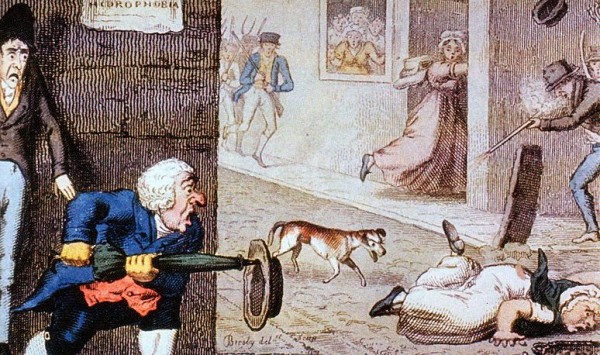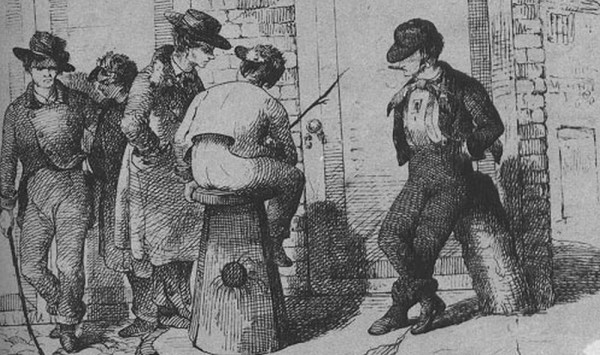MAD DOGS & BROOKLYN MAYORS (1844)

******************************************************************************************************************************** Brownstone Detectives investigates the history of our clients’ homes. The story you are about to read was composed from research conducted in the course of one of those investigations. Do you know the history of YOUR house? ******************************************************************************************************************************** In Brooklyn in 1843, there was a dog problem. A MAD dog problem. The people of Brooklyn – in what makes up Brooklyn Heights and the Downtown Brooklyn area today – were getting fed up with the number of strays, a good number of which were exhibiting “mad” tendencies, biting Brooklynites from time to time. A newspaper of the period complained of how “our streets are filled with miserable, half-starved curs whose dismal howlings make night hideous.” They demanded, thus, that a law be enacted to “shield us from that frightful malady – hydrophobia.” A FEAR OF WATER Back in the day, the disease that we know today as rabies was called hydrophobia. The disease was labeled hydrophobia – or a fear of water – because its subjects were not only unable to swallow water, but they had such a fear of it that it sent them into spasms or running from its very presence. And, of course, there was no cure for hydrophobia. Although, there was no shortage of quacks who sold “instant cures” to the masses through the mails or in their offices – such as the goodly Dr. S. Bachelder, across the East River at 343 Broome Street on Manhattan. Bachelder offered “Thompsonian and other Botanic Medicines” for […]
THE HIPSTERS OF WARTIME FORT GREENE (1864)

******************************************************************************************************************************** Brownstone Detectives investigates the history of our clients’ homes. The story you are about to read was composed from research conducted in the course of one of those investigations. Do you know the history of YOUR house? ******************************************************************************************************************************** “I lean and loafe at my ease observing a spear of summer grass.” Walt Whitman wrote this line at the beginning of the poem that later became “Song of Myself.” Whitman was a self-styled loafer. And, in the mid-1800s, loaferism was not a very popular pastime – excepting, of course, with the loafers. Loafers, to bring the term into a modern day focus, were the rowdy hipsters of their times – non-conforming, proudly different, and not at all afraid to show it. “…(T)he age abounded in loafers. There were literary loafers, Yankee loafers, French loafers, genteel loafers, common loafers, and country loafers, among others…” noted Michael Zakim a paper entitled, The Business Clerk as Social Revolutionary; or, a Labor History of the Nonproducing Class. “(L)oaferism was essentially a metropolitan phenomenon,” he continued, “haunting the city’s sidewalks, wharves, museums, and parks, and serving as a ready epithet for anyone needing to hurl an insult.” And insults and rowdyism seemed to be what they did best. The newspapers are filled in ante- and post-bellum times of accounts of loafers, how bad they were, and what the good, upright, and moral citizens were to do about them. “Loafers were known for cursing without shame and for smoking cigars,” Zakim noted. “They cared little for […]